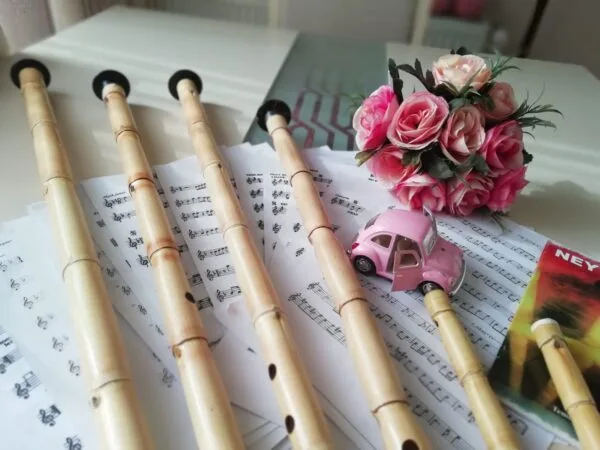What Should I Pay Attention to When Buying a Ney?
I'm Starting to Learn the Ney — What Should I Pay Attention to When Choosing One?
When buying a ney, the most important point to consider is that the instrument must be opened (crafted) by someone who knows this art and plays the ney. The tuning must be accurately matched to the type of ney planned for purchase.Ideally, you should hold the ney yourself to see if it suits your finger structure. According to your playing style, you must check whether the muhayyer, gerdaniye, and neva notes are consistent in their open/closed positions, and it is essential to check the ırak (F♯) note.
Which type of ney should I choose?
What to Consider When Buying a Ney
The variety of neys is not related to structural differences, but solely to the length of the instrument and the corresponding tone it produces. As noted in our article titled 'Types of Ney' , the ney has a fixed tuning, and because it is difficult to perform pieces by transposing notes, using neys in various tunings has become necessary—thus giving rise to different types of neys.
If you are an advanced ney player, it is appropriate to consider your intended use—whether solo or ensemble—and the setting, such as stage or hobby-based practice, when deciding which type (karar) of ney to choose. If you are just beginning to learn the ney and your teacher hasn't made a specific recommendation, then choosing a kız ney—generally easy to blow, suitable for solo and group practice, and also available on our website—would be a good choice for you. If your current ney begins to feel insufficient, you may transition to a larger kız ney or a yıldız ney, mansur ney and other ney types .
How much should the ney I purchase cost?
https://www.sahaney.com/ney-alirken-nelere-dikkat-etmeliyim/
As the proverb goes, “Cheap meat makes a tasteless stew” (according to the TDK Dictionary of Proverbs and Idioms, meaning: things obtained cheaply are usually of poor quality). Neys that you can find on the market below a certain price may not be properly tuned and might be made from unsuitable reed. Considering that suitable reed for ney making is difficult to obtain and that ney cannot be produced industrially, it is wise to avoid obviously cheap neys.
The price of a ney is primarily determined by the diameter and quality of the reed, as well as the materials used for the başpare and parazvaneler, along with other characteristics. For these reasons, since the instrument comes with a wide price range, it is best to choose a ney that suits your own needs and circumstances. One must also remember that even the instrument you buy at the most affordable price is still a ney.
Store offers you the opportunity to explore our ney selection currently on sale to get a sense of pricing—or you may use the form to share your desired features and receive a tailored price offer.
I want to buy a ney—what features should I look for?
You should choose a ney made from a reed with a glossy surface and nodes that are equal or nearly equal in length, with proper tuning and crafted by a skilled artisan. For more detailed information on this topic, reading our article titled Which Ney Should I Choose?' will be helpful.
How should I carry and store the ney I’ve purchased?
We previously published a comprehensive article on how to care for a ney. Now, we will provide general information on how to store the ney you have purchased.
To prevent breakage or cracking during transport, the ney you’ve purchased should be stored in case, box, or carrying bag ((in our store) that is suitable for protection.
When not in use, you may store your ney by hanging it vertically at a 90-degree angle to the ground or placing it horizontally at a 180-degree angle in a suitable location, such as a specially designed ney hanger. During vertical or horizontal storage, it is important that the başpare rests in a position that does not disturb its current angle.
